- Choosing the Right Variety
- Location and Soil Preparation
- Sowing Lobelia Seeds
- 1. Choose the right time
- 2. Prepare the soil
- 3. Sow the seeds
- 4. Water and care
- 5. Transplanting
- Watering and Fertilizing
- Watering
- Fertilizing
- Care Tips for Lobelia Plants
- Pests and Diseases
- Harvesting and Storage
- Questions and Answers:
- What is lobelia?
- How do I plant lobelia?
- Can I grow lobelia from seeds?
- How long does it take for lobelia seeds to germinate?
- What are the important care tips for growing lobelia?
- Videos: Lobelia Earinus – garden lobelia/growing/seeding/planting/blue flowers
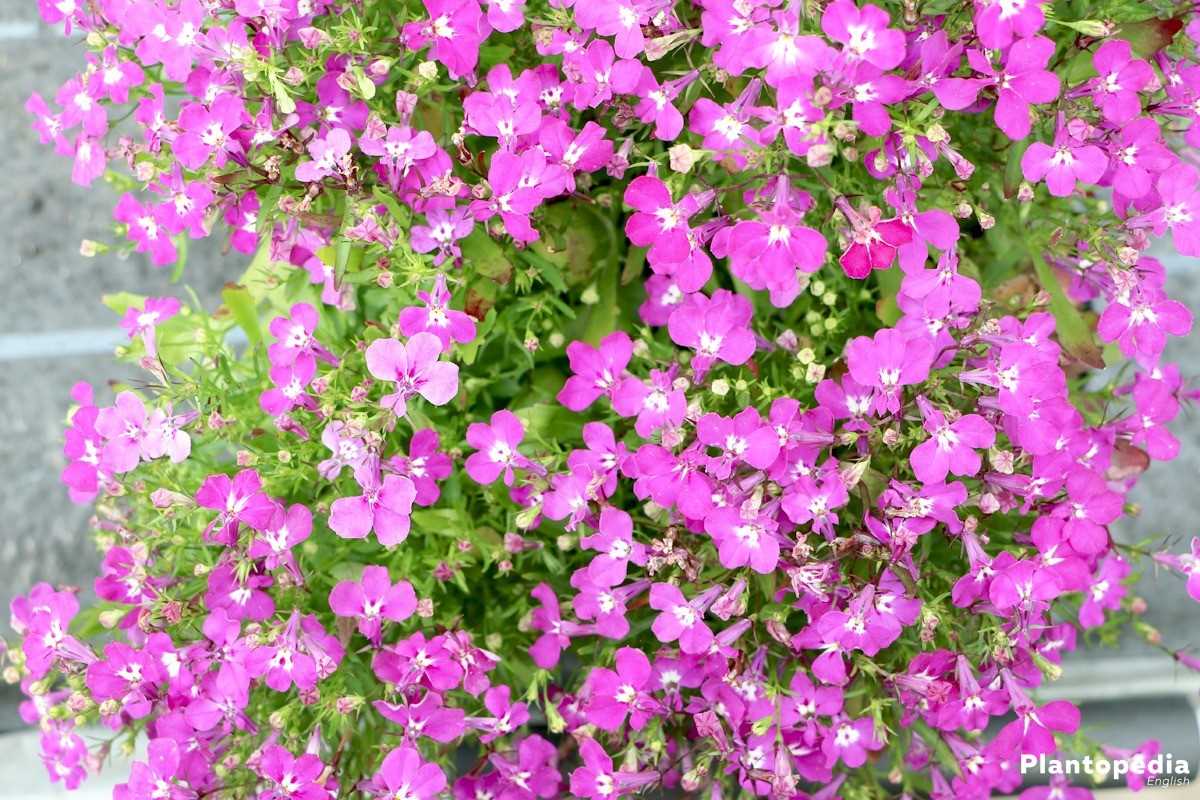
Lobelia is a beautiful and versatile plant that can add vibrant colors and lush foliage to any garden or landscape. Whether you want to create a vibrant flower bed, a hanging basket, or simply add some color to your window boxes, lobelia is a great choice. In this complete guide, we will take you through the process of planting and caring for lobelia, including growing it from seed.
Planting: Lobelia can be planted in both containers and in the ground. It prefers well-draining soil and a location that receives full sun to partial shade. Start by preparing the soil by loosening it and adding compost or organic matter to improve drainage. If you’re planting lobelia in a container, make sure it has drainage holes to prevent waterlogging.
Tip: Lobelia seeds are very tiny, so mix them with some sand or fine soil before sowing to help distribute them more evenly.
Growing from Seed: To grow lobelia from seed, start by sowing the seeds thinly on the soil surface, then gently press them down. Keep the soil moist but not waterlogged, as excess water can cause the seeds to rot. The seeds usually germinate in 7-14 days, depending on the variety.
Tip: You can start lobelia seeds indoors 6-8 weeks before the last frost date and transplant them outdoors after the danger of frost has passed.
Care: Lobelia is relatively low-maintenance, but it does require regular watering to keep the soil consistently moist. If the weather is hot and dry, you may need to water your lobelia more frequently. Deadhead the faded flowers to encourage continuous blooming and remove any leggy or yellowing stems to maintain a compact and tidy appearance.
Tip: Lobelia is also prone to slugs and snails, so keep an eye out for these pests and take appropriate measures to protect your plants.
In conclusion, growing lobelia from seed can be a rewarding and enjoyable gardening experience. With the right planting techniques and care, you can enjoy a beautiful display of lobelia flowers in your garden or containers. So go ahead and give it a try!
Choosing the Right Variety
When it comes to choosing a lobelia variety for your garden, there are several factors to consider. The first thing to think about is the type of lobelia you want to grow. Lobelia plants can be either annuals or perennials, so it’s important to decide which type is best suited for your needs.
If you’re looking for a plant that will add a burst of color to your garden for one season, then an annual lobelia variety is the way to go. These plants grow quickly and produce vibrant flowers in a range of colors including blue, purple, pink, and white. They are perfect for filling in gaps in flower beds or adding color to hanging baskets and containers.
On the other hand, if you want a more permanent addition to your garden, a perennial lobelia variety is the better choice. These plants come back year after year and often have a longer flowering period than their annual counterparts. They are great for creating a long-lasting display of flowers in borders or as ground cover in shady areas.
Once you’ve decided on the type of lobelia you want to grow, you can then consider other factors such as flower color, plant size, and growth habit. Lobelia plants can range in height from just a few inches to several feet, so be sure to choose a variety that fits well with your existing garden layout. Additionally, consider the overall color scheme of your garden and choose a lobelia variety that complements or contrasts nicely with the other plants.
It’s also worth noting that some varieties of lobelia are better suited to specific growing conditions. For example, there are varieties that are more tolerant of hot and dry conditions, while others prefer cooler and more moist environments. If you live in a region with extreme weather conditions, make sure to choose a lobelia variety that is well-adapted to your local climate.
Lastly, don’t be afraid to experiment with different varieties of lobelia in your garden. Mix and match different colors and sizes to create eye-catching displays and unique combinations. With so many options to choose from, you’re sure to find the perfect lobelia variety for your garden.
Location and Soil Preparation
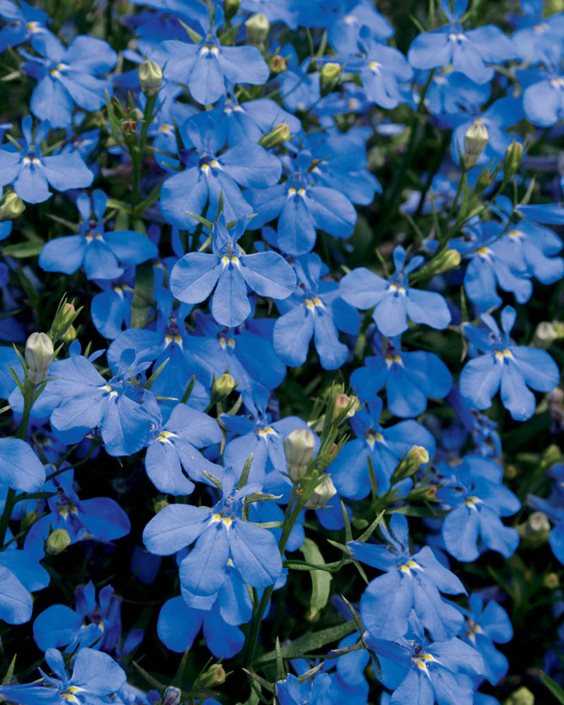

Lobelia plants prefer to grow in a location that receives full sun to partial shade. They can tolerate some shade, especially in hotter climates. However, too much shade can hinder their growth and flowering.
When choosing a location for your lobelia plants, ensure that the soil is well-draining. Lobelias thrive in moist environments but can’t tolerate waterlogged soil. If your soil tends to retain water, you can improve drainage by adding organic matter such as compost or well-rotted manure.
The soil pH for lobelias should be slightly acidic to neutral, ranging from 6.0 to 7.0. You can test the pH of your soil using a soil testing kit to determine if any amendments are necessary.
Prior to planting lobelias, it’s important to prepare the soil properly. Start by removing any weeds or grass from the planting area, as they can compete with the lobelia plants for nutrients and water.
Loosen the soil using a garden fork or tiller, incorporating the organic matter and any necessary amendments. This will improve the soil’s texture and fertility, allowing the lobelias to establish themselves more easily.
If you’re growing lobelias in containers, choose a well-draining potting mix specifically formulated for container gardening. Ensure that the container has drainage holes to prevent waterlogged soil.
By selecting an appropriate location and properly preparing the soil, you can provide the ideal growing conditions for your lobelia plants, ensuring their health and vigor.
Sowing Lobelia Seeds
Sowing lobelia seeds is a simple process that can be done both indoors and outdoors. Here are the steps to successfully sow lobelia seeds:
1. Choose the right time
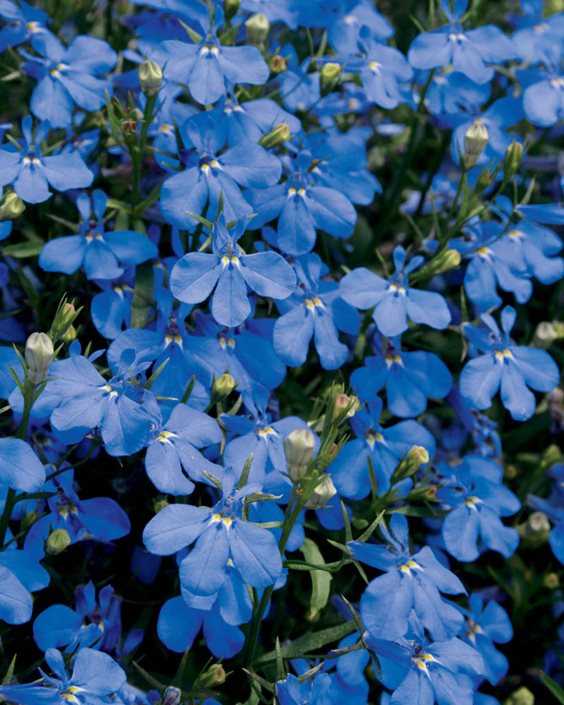

Lobelia seeds can be sown indoors 8-10 weeks before the last frost date in your area. If you prefer to sow them outdoors, wait until after the last frost date has passed.
2. Prepare the soil
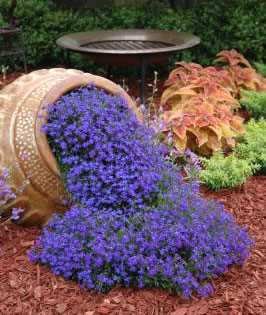

Before sowing lobelia seeds, prepare the soil by removing any weeds or debris and loosening it with a garden fork or rake. Lobelias prefer well-drained soil, so adding some organic matter like compost can improve the soil’s fertility and drainage.
3. Sow the seeds
If sowing indoors, fill a seed tray or pots with seed compost and lightly firm it down. Scatter the lobelia seeds over the surface of the compost, leaving some space between them. Gently press the seeds into the compost, but do not cover them with soil as they need light to germinate.
If sowing outdoors, create shallow furrows in the prepared soil. Place the lobelia seeds along the furrows, leaving a few inches of space between them. Cover the seeds with a thin layer of soil or compost and gently water the area.
4. Water and care
After sowing the lobelia seeds, water them gently to ensure the soil is evenly moist. Keep the soil consistently moist but not waterlogged during the germination period. If sowing indoors, place the seed tray in a warm area with indirect sunlight. If sowing outdoors, provide a protective cover like a cloche or plastic wrap until the seeds germinate.
5. Transplanting
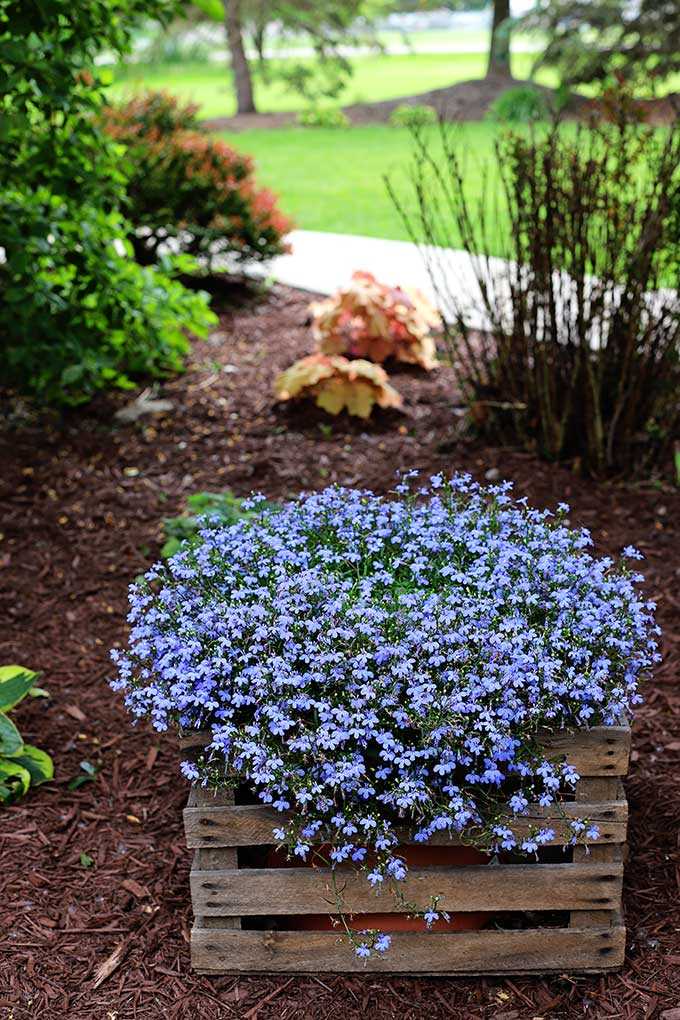

Once the lobelia seedlings have developed a few true leaves and are large enough to handle, they can be transplanted into individual pots or the garden. Transplant them carefully, ensuring the roots are not damaged, and provide them with adequate sun exposure and water.
Following these steps and providing the right care will help you successfully sow lobelia seeds and enjoy beautiful, colorful blooms in your garden.
Watering and Fertilizing
Proper watering and fertilizing are essential for the healthy growth and blooming of lobelia plants. Here are some guidelines to follow:
Watering
Lobelia plants generally prefer evenly moist soil, so regular watering is important. Check the soil moisture regularly by inserting your finger into the soil up to the second knuckle. If the soil feels dry at that level, it’s time to water.
When watering, aim to wet the soil evenly without overwatering or allowing the plants to sit in standing water. Water slowly and deeply, making sure the water reaches the plant’s root zone.
During hot and dry weather, lobelia plants may require more frequent watering to prevent wilting. Mulching around the plants can help retain moisture and regulate soil temperature.
Fertilizing
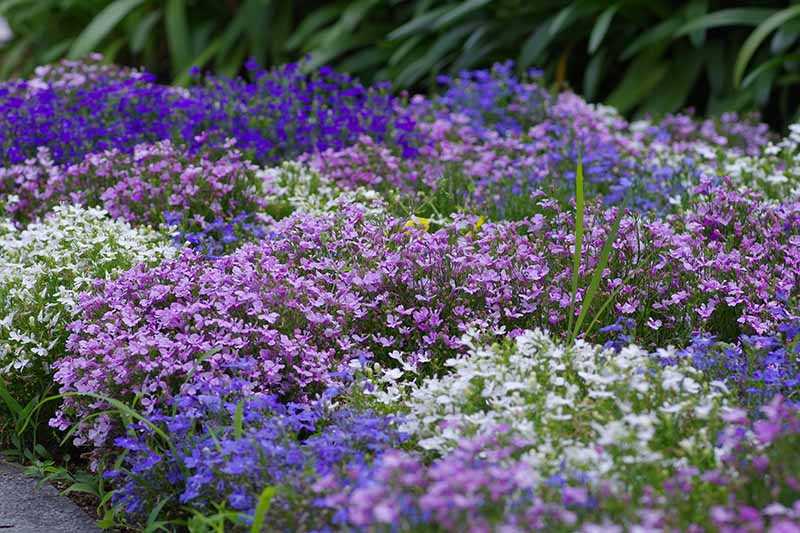

Lobelia plants benefit from regular fertilization to promote healthy growth and abundant flowering. Use a balanced, water-soluble fertilizer with a ratio such as 10-10-10 or 20-20-20.
Start fertilizing two weeks after planting and continue every two weeks throughout the growing season. Follow the instructions on the fertilizer packaging for the proper dilution and application rate.
Alternatively, you can use a slow-release granular fertilizer when planting lobelia. This will provide a steady supply of nutrients over a longer period of time.
Avoid overfertilizing lobelia plants, as excessive fertilization can lead to lush foliage with fewer flowers. Always follow the recommended dosage and frequency to maintain a balanced growth and flowering.
Care Tips for Lobelia Plants
- Watering: Lobelia plants need regular watering to keep the soil consistently moist. Water them deeply once a week, but make sure the soil has good drainage to prevent root rot.
- Sunlight: Lobelia plants prefer partial shade to full sun. Make sure they receive at least 4-6 hours of sunlight per day. In hotter regions, they may benefit from some shade during the hottest part of the day.
- Soil: Lobelia plants prefer well-draining soil that is rich in organic matter. Use a good quality potting mix when planting them in containers or amend garden soil with compost before planting them in the ground.
- Fertilizer: Lobelia plants benefit from regular feeding. Use a balanced, water-soluble fertilizer every two weeks during the growing season to promote healthy growth and abundant blooms.
- Deadheading: Remove faded flowers regularly to encourage continuous blooming. This will also prevent the plants from self-seeding and becoming invasive in the garden.
- Pruning: Lobelia plants may benefit from occasional pruning to maintain a compact and tidy appearance. Pinch back the tips of the plants to encourage bushier growth and remove any leggy or damaged stems.
- Pest and Disease Control: Lobelia plants are generally resistant to most pests and diseases. However, they can occasionally be affected by aphids, slugs, or powdery mildew. Monitor the plants regularly and take appropriate action if any issues arise.
- Overwintering: Lobelia plants are usually grown as annuals, but in warmer regions, they can be grown as perennials. In colder areas, they may not survive the winter. If you want to overwinter lobelia plants, bring them indoors or protect them with mulch or a frost blanket.
Pests and Diseases
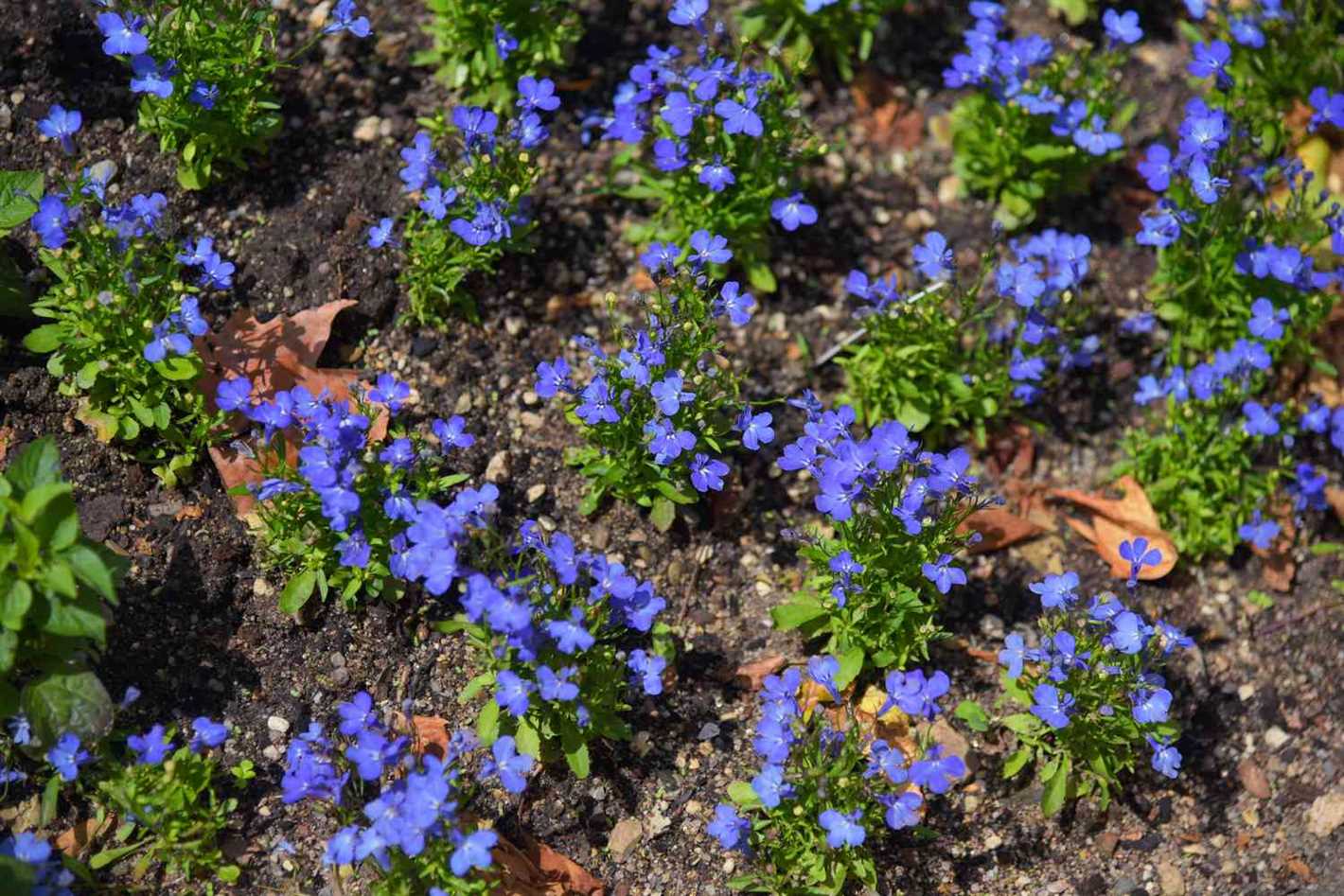

- Aphids: These small insects feed on Lobelia plants and can cause stunted growth and distorted leaves. To control aphids, you can spray the plants with insecticidal soap or use a strong stream of water to wash them off.
- Slugs and Snails: These pests can munch on the leaves and flowers of Lobelia plants. To keep them away, you can sprinkle diatomaceous earth around the plants or set up beer traps to attract and drown them.
- Whiteflies: These tiny insects suck the sap from the leaves of Lobelia plants, causing yellowing and wilting. To control whiteflies, you can use sticky traps or introduce natural predators like ladybugs or lacewings.
- Leaf Spot: This fungal disease causes small, dark spots to appear on the leaves of Lobelia plants. To prevent leaf spot, make sure to provide proper air circulation and avoid overwatering. If leaf spot occurs, remove and destroy the affected leaves.
- Powdery Mildew: This fungal disease appears as a white, powdery coating on the leaves of Lobelia plants. To treat powdery mildew, you can use a fungicide or a homemade solution of baking soda and water. Pruning the affected parts of the plant can also help prevent the spread of the disease.
- Root Rot: Overwatering and poor drainage can lead to root rot in Lobelia plants. To prevent this disease, make sure to plant the Lobelia in well-draining soil and avoid overwatering. If root rot occurs, remove the infected plant and improve drainage in the area.
- Botrytis Blight: This fungal disease causes grayish-brown spots to appear on the leaves and flowers of Lobelia plants. To prevent botrytis blight, provide good air circulation and avoid overhead watering. If the disease appears, remove the affected parts of the plant and treat with a fungicide.
Harvesting and Storage
Harvesting lobelia is a simple process that can be done throughout the growing season. Here are some guidelines to follow:
- Harvesting: When the lobelia plants are in full bloom, you can start harvesting the flowers. Cut the flower stems just above the base of the plant, using a sharp pair of pruning shears or scissors. Make sure to leave some flowers on the plant for the bees and butterflies to enjoy.
- Drying: After harvesting the flowers, you can dry them to preserve their beauty and fragrance. To do this, tie the flower stems together in small bunches and hang them upside down in a warm, dry, and well-ventilated area. Allow the flowers to dry completely, which usually takes about one to two weeks.
- Storing: Once the flowers are dry, you can store them in airtight containers to maintain their quality. For longer shelf life, keep the dried flowers in a cool and dark place. Using glass jars or metal tins with tight-fitting lids is preferable to plastic containers, as they provide better protection against moisture and pests.
- Use: The dried lobelia flowers can be used in various ways. They make a beautiful addition to floral arrangements, potpourri, and sachets. You can also use the dried flowers to make herbal tea or infusions, which are known for their calming and respiratory health benefits.
Note: It’s important to handle lobelia flowers with care, as they can cause skin irritations or allergic reactions in some individuals. If you experience any adverse reactions, discontinue use immediately and seek medical advice if necessary.
Caution: Lobelia is not suitable for consumption or internal use in large quantities, as it contains toxic alkaloids. Always consult a healthcare professional before using lobelia for medicinal purposes.
Questions and Answers:
What is lobelia?
Lobelia is a flowering plant that belongs to the Campanulaceae family.
How do I plant lobelia?
To plant lobelia, prepare a well-drained soil mix and fill a container or hanging basket. Place the seeds on top of the soil and cover them lightly with a thin layer of soil. Water the seeds regularly and keep them in a warm location until they germinate.
Can I grow lobelia from seeds?
Yes, lobelia can be easily grown from seeds. Sow the seeds on top of a well-drained soil mix, cover lightly with soil, and keep the soil moist until the seeds germinate.
How long does it take for lobelia seeds to germinate?
Lobelia seeds usually take about 10 to 14 days to germinate. However, the germination time can vary depending on the specific variety and growing conditions.
What are the important care tips for growing lobelia?
Some important care tips for growing lobelia include providing them with well-drained soil, regular watering, fertilizing every two weeks, and deadheading spent flowers to promote continuous blooming.







